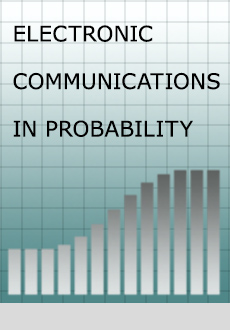Abstract
In the classical balls-and-bins model, $m$ balls are allocated into $n$ bins one by one uniformly at random. In this note, we consider the $d$-thinning variant of this model, in which the process is regulated in an on-line fashion as follows. For each ball, after a random bin has been selected, an overseer may decide, based on all previous history, whether to accept this bin or not. However, one of every $d$ consecutive suggested bins must be accepted. The maximum load of this setting is the number of balls in the most loaded bin. We show that after $\Theta (n)$ balls have been allocated, the least maximum load achievable with high probability is $(d+o(1))\sqrt [d]{\frac{d\log n} {\log \log n}}$. This should be compared with the related $d$-choice setting, in which the optimal maximum load achievable with high probability is $\frac{\log \log n} {\log d}+O(1)$.
Citation
Ohad Noy Feldheim. Jiange Li. "Load balancing under $d$-thinning." Electron. Commun. Probab. 25 1 - 13, 2020. https://doi.org/10.1214/19-ECP282
Information





